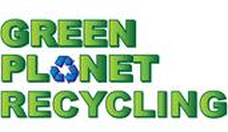Introduction
The issue of waste management has become increasingly crucial in today’s society. As the population continues to grow, so does the amount of waste generated. One particular type of waste that poses a significant challenge is mattresses. These large, bulky items are difficult to dispose of properly, leading to environmental concerns and the need for effective solutions. This article delves into the world of mattress recycling, exploring its benefits, processes, and impact on sustainability.
Looking for a professional service? CONTACT US for a FREE QUOTE
What is Mattress Recycling?
Mattress recycling refers to the process of diverting discarded mattresses from landfills and transforming their components into new products. This approach aims to minimize waste, conserve resources, and reduce environmental impact. Mattresses are composed of various materials such as foam, fabric, metal, and wood, which can be recovered and recycled for further use. By implementing mattress recycling programs, communities can effectively tackle the challenges associated with waste management while promoting sustainability.
The Importance of Mattress Recycling
Proper mattress recycling offers several important benefits, including:
- Waste Reduction: Mattresses are a significant contributor to landfill waste. Recycling them reduces the amount of waste sent to landfills, alleviating the strain on these already overburdened sites.
- Resource Conservation: The materials used in mattresses, such as steel springs, foam, and textiles, can be recovered and reused in other industries. Recycling conserves these valuable resources and reduces the need for new raw materials.
- Environmental Preservation: Mattresses contain components that can harm the environment when left to decompose in landfills. By recycling them, hazardous substances are kept out of soil and groundwater, minimizing pollution risks.
- Energy Savings: Recycling mattresses requires less energy compared to manufacturing new ones from scratch. This energy-saving aspect contributes to reducing greenhouse gas emissions and mitigating climate change.
How Does Mattress Recycling Work?
The process of mattress recycling typically involves the following steps:
1. Collection
The first stage of mattress recycling involves collecting discarded mattresses from various sources, such as households, hotels, and institutions. Local recycling facilities often provide drop-off points or offer pick-up services to ensure convenient and efficient collection.
2. Dismantling and Sorting
Once the mattresses are collected, they are brought to recycling centers where they undergo dismantling. Skilled workers carefully separate the different components, such as foam, fabric, springs, and wood, using specialized tools. This dismantling process ensures that each material can be recycled appropriately.
3. Component Recycling
After the dismantling and sorting process, the individual components of the mattress undergo further recycling. Here are some common recycling methods for different mattress materials:
– Foam:
The foam from mattresses can be broken down and processed to create carpet underlay, padding for furniture, or even converted into fuel.
– Fabric:
The fabric from mattresses is often recycled into industrial rags or repurposed for insulation material.
– Springs:
Metal springs can be recycled and used in various applications, such as new springs, building materials, or even automotive parts.
– Wood:
Wood from mattress frames can be chipped and transformed into mulch, used in landscaping or as biomass fuel.
4. Manufacturing New Products
Once the individual mattress components are recycled, they can be used as raw materials in the manufacturing of new products. For example, recycled foam and fabric can be incorporated into the production of new mattresses or other foam-based products. This closed-loop recycling approach maximizes resource efficiency and minimizes waste generation.
FAQs about Mattress Recycling
- Why should I recycle my mattress? Recycling your mattress helps reduce waste, conserve resources, and minimize environmental impact. It is an eco-friendly choice that promotes sustainability.
- Can all types of mattresses be recycled? Yes, most types of mattresses can be recycled, including innerspring, memory foam, latex, and hybrid mattresses. However, it’s essential to check with local recycling facilities to confirm which types they accept.
- Is mattress recycling cost-effective? While the cost of recycling varies depending on location and specific recycling processes, mattress recycling can often be more cost-effective than traditional disposal methods. Additionally, the environmental benefits make it a worthwhile investment.
- Where can I recycle my old mattress? Many cities and towns have dedicated mattress recycling programs or facilities. Check with your local waste management authority or recycling centers to find the nearest drop-off locations or pick-up services.
- What happens to the mattress components that cannot be recycled? In cases where certain components cannot be recycled, efforts are made to dispose of them in an environmentally responsible manner. For example, metal springs can be taken to scrap metal yards, and wood can be chipped for energy generation or used in construction.
- Are there any alternatives to mattress recycling? Donating used mattresses to charities or organizations that accept them for reuse is an alternative to recycling. However, it’s crucial to ensure the mattress is in good condition and meets the requirements of the specific organization.
Looking for a professional service? CONTACT US for a FREE QUOTE
Conclusion
Mattress recycling offers a sustainable solution to the challenges posed by waste management. By diverting discarded mattresses from landfills and recycling their components, we can reduce waste, conserve resources, and minimize environmental impact. With the proper implementation of mattress recycling programs and increasing public awareness, we can pave the way for a more sustainable future.

